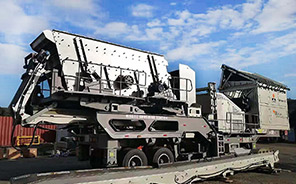Calculating the parameters for a mini ball mill involves several key factors, including mill dimensions, speed, media size, and material properties. Below is a step-by-step guide to help you estimate critical parameters:
—
.jpg) 1. Mill Dimensions & Capacity
1. Mill Dimensions & Capacity
– Volume of the Mill Jar (V):
\[
V = \pi r^2 h
\]
where:
– \( r \) = inner radius of the jar (in cm or m)
– \( h \) = inner height of the jar
– Recommended Filling Ratio:
– Media filling: 30–50% of jar volume
– Material filling: ~25–40% of void space between media
—
2. Critical Speed (Optimal RPM)
The mill should operate at 60–75% of its critical speed for efficient grinding.
\[
N_c = \frac{42.3}{\sqrt{D – d}}
\]
where:
– \( N_c \) = critical speed (RPM)
– \( D \) = inner diameter of the jar (in meters)
– \( d \) = diameter of grinding media (in meters)
Example:
If \( D = 0.1 \, \text{m} \) and \( d = 0.005 \, \text{m} \):
\[
N_c = \frac{42.3}{\sqrt{0.1 – 0.005}} ≈ 137 \, \text{RPM}
\]
Operating RPM ≈ 70% of \( N_c \) → ~96 RPM
—
 3. Grinding Media Size & Quantity
3. Grinding Media Size & Quantity
– Media Diameter (\( d_{media} \)): Typically 3–10 mm for small mills.
– Number of Balls (\( N_{balls} \)): Depends on filling ratio (~30–50%).
\[
N_{balls} ≈ \frac{\text{Filling \% × Jar Volume}}{\text{Volume of One Ball}}
\]
For example, with a 1L jar filled to 40% with 5mm balls:
\[
\text{Volume per ball} = \frac{4}{3}\pi (0.0025)^3 ≈ 6.54 × 10^{-8} \, m^3
\]
\[
N_{balls} ≈ \frac{0.4 × 0.001}{6.





Leave a Reply